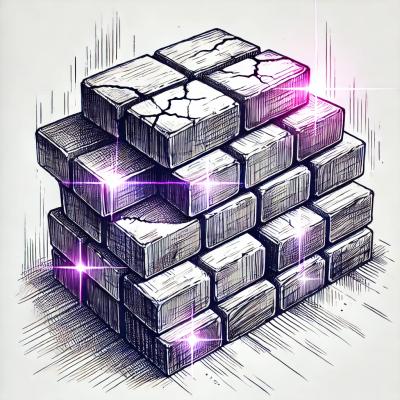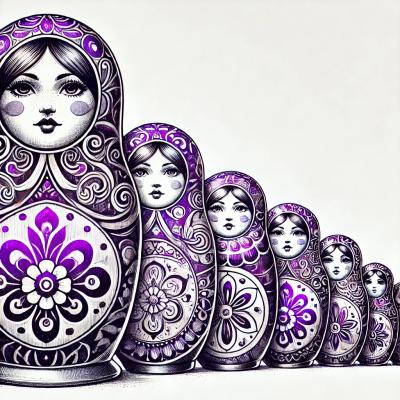
Security News
Input Validation Vulnerabilities Dominate MITRE's 2024 CWE Top 25 List
MITRE's 2024 CWE Top 25 highlights critical software vulnerabilities like XSS, SQL Injection, and CSRF, reflecting shifts due to a refined ranking methodology.
Set of practical functions for webgl.
const u = require('gl-util');
let gl = u.context(canvas)
let prog = u.program(gl, `
precision mediump float;
attribute vec2 position;
void main() {
gl_Position = vec4(position * 2. - 1., 0, 1);
}
`, `
precision mediump float;
uniform vec4 color;
void main () {
gl_FragColor = color;
}
`);
u.attribute(prog, 'position', [0,0, 1,0, 0,1]);
u.uniform(prog, 'color', [1, .2, 0, 1.]);
gl.drawArrays(gl.TRIANGLES, 0, 3);
context(container|canvas|options?)Create and/or return WebGL context for the canvas element, possibly based on options. If container is not defined, document.body is used.
| Option | Meaning |
|---|---|
canvas | A canvas element to obtain context for. |
container | An element to create canvas in and return context for it. |
width | If specified, will set the canvas width. |
height | If specified, will set the canvas height. |
pixelRatio | Multiplier for width and height. |
attributes | Attributes object. Available attributes: alpha, depth, stencil, antialias, premultipliedAlpha, preserveDrawingBuffer and failIfMajorPerformanceCaveat. |
const getContext = require('gl-util/context')
// create canvas element in the document.body and retrieve context for it
let gl = getContext({
attributes: {
antialias: true
}
})
prog = program(gl, prog|vert?, frag?)Set active program or create a new program from vertex and fragment sources. Programs are cached for the context by source. The WebGLProgram instance is returned.
const program = require('gl-util/program')
// create and set program
let prog = program(gl, `
precision mediump float;
attribute vec2 position;
void main() {
gl_Position = vec4(position * 2. - 1., 0, 1);
}
`, `
precision mediump float;
uniform sampler2D image;
uniform vec2 shape;
uniform float x;
void main () {
gl_FragColor = texture2D(image, gl_FragCoord.xy / shape);
}
`)
// set active program
program(gl, prog)
unif = uniform(gl|program, {name: data, ...} | name?, data?)Get/set uniform or multiple uniforms. Returns an object with uniform parameters: {name, location, data, type}. Uniforms are stored per-program instance.
const uniform = require('gl-util/uniform')
uniform(gl, 'color', [1, .2, 0, 1]);
txt = texture(gl, {name: params, ...} | name?, params?)Set texture[s] data or parameters:
| Name | Meaning |
|---|---|
data | Data passed to texture. Can be array, typed array, image, canvas or string denoting the URL of image to load. |
index | Texture unit number, if undefined - calculated automatically. |
filter | Sets texture scaling for both min and mag. Can be defined as two separate properties minFilter and magFilter. By default gl.LINEAR. |
wrap | Defines texture tiling vertically and horizontally. Can be defined precisely as wrapS and wrapT. By default gl.CLAMP_TO_EDGE, can be gl.MIRRORED_REPEAT or gl.. |
width | In pixels |
height | In pixels |
format | gl.ALPHA, gl.RGB, gl.RGBA (default), gl.LUMINANCE, gl.LUMINANCE_ALPHA, gl.DEPTH_COMPONENT, gl.DEPTH_STENCIL, etc |
type | gl.UNSIGNED_BYTE, can be gl.FLOAT with proper extension enabled |
level | 0, mipmap level. |
Returns object with texture properties {data, index, location, minFilter, magFilter, wrapS, wrapT, width, height, format, type, texture}.
const texture = require('gl-util/texture')
let {width, height} = texture(gl, 'image', './picture.gif');
attr = attribute(gl, {name: params, ...} | name?, params?)Set attribute[s] data or parameters:
| Name | Default | Meaning |
|---|---|---|
data | null | Data for the attribute, can be array, typed array or array buffer |
size | 2 | Number of data items per vertex |
stride | 0 | Offset in bytes between the beginning of consecutive vertex attributes. |
offset | 0 | Offset in bytes of the first component in the data. Must be a multiple of type. |
type | gl.FLOAT | Data type of each component in the data array. Must be one of: gl.BYTE, gl.UNSIGNED_BYTE, gl.SHORT, gl.UNSIGNED_SHORT, gl.FLOAT. |
usage | gl.STATIC_DRAW | Mode of draw: gl.STATIC_DRAW (rare changes), gl.DYNAMIC_DRAW (frequent changes) or gl.STREAM_DRAW (frequent updates) |
normalized | false | If fixed-point data values should be normalized or are to converted to fixed point values when accessed. |
index | 0 | Attribute unit number, detected automatically if omitted. |
target | gl.ARRAY_BUFFER | |
buffer | null | WebGLBuffer to use for attribute |
Returns attribute properties {data, size, stride, offset, usage, type, normalized, index, target, buffer}.
const attribute = require('gl-util/attribute')
attribute(gl, 'position', [0,0,1,0,0,1]);
clear(gl, optsion?)Clear the viewport.
There are regl, stack.gl and many other WegGL components or frameworks, so why gl-util?
(c) 2018 Dmitry Yv. MIT License
so
FAQs
Set of practical webgl utils
The npm package gl-util receives a total of 147,527 weekly downloads. As such, gl-util popularity was classified as popular.
We found that gl-util demonstrated a not healthy version release cadence and project activity because the last version was released a year ago. It has 2 open source maintainers collaborating on the project.
Did you know?

Socket for GitHub automatically highlights issues in each pull request and monitors the health of all your open source dependencies. Discover the contents of your packages and block harmful activity before you install or update your dependencies.

Security News
MITRE's 2024 CWE Top 25 highlights critical software vulnerabilities like XSS, SQL Injection, and CSRF, reflecting shifts due to a refined ranking methodology.

Security News
In this segment of the Risky Business podcast, Feross Aboukhadijeh and Patrick Gray discuss the challenges of tracking malware discovered in open source softare.

Research
Security News
A threat actor's playbook for exploiting the npm ecosystem was exposed on the dark web, detailing how to build a blockchain-powered botnet.